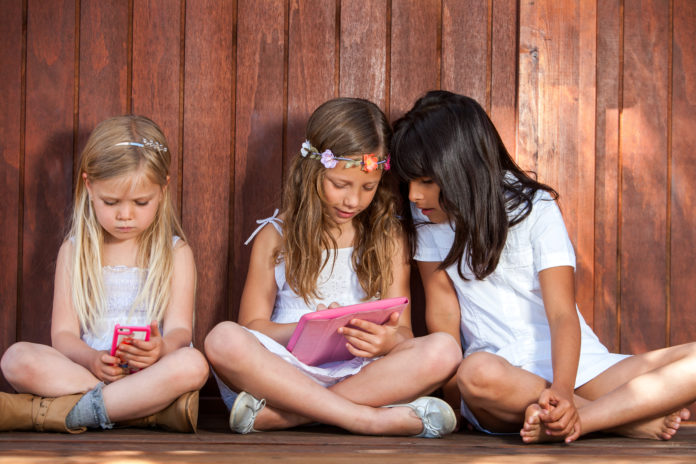Source: The Conversation (Au and NZ) – By Pasi Sahlberg, Professor of Education Policy, UNSW
Teachers say most students have lost the ability to focus, are less empathetic and spend less time on physical activity.
These are some of the results from our Growing Up Digital Australia study, in which we surveyed almost 2,000 teachers and school leaders across Australia.
We asked them how students from primary school to year 12 have changed in the last five years, and what might explain these changes.
Nearly four out of five teachers said they saw a decrease in students’ ability to focus on learning tasks, 80% saw a decline in students’ empathy and 60% observed students spending less time on physical activity.
Read more: Do you ‘zombie check’ your phone? How new tools can help you control technology over-use
These downward trends could be caused by many factors. But a good starting point is to look at the undeniably biggest change in children’s lives in the last decade – screen technology.
Growing up digital
Educational technologies have opened new opportunities for teaching and learning.
Teachers use technology to make complicated content more understandable, students learn how to communicate their knowledge across digital platforms like podcasts, and schools use technology to report students’ performance.
But a 24/7 connection to the internet comes with possible downsides too. Researchers and health experts around the world have expressed concerns about the possible consequences of heavy screen use on children.
The steady increase in depression, anxiety disorders and other mental health issues among young people has been well reported. And researchers have debated whether screens may be a possible reason for young people’s declining mental health.
Read more: Is social media damaging to children and teens? We asked five experts
It is hard to prove a direct causal link between worsening health outcomes and extended time spent on digital devices. But we can learn much about these complex relationships by exploring views and experiences of teachers, parents and young people themselves.
So, what do we know?
According to a recent poll by the Royal Children’s Hospital, 95% of high-school students, two-thirds of primary school children and one-third of preschoolers own a screen-based digital device.
In an earlier study we found 92% of Australian parents think smartphones and social media have reduced time children have for physical activity and outdoor play.

Four out of five parents said social media was a distraction in their child’s life, that impacted negatively on their well-being and family relations.
Another survey showed young people spend one-third of their time awake staring at screens.
In the Growing Up Digital in Australia study, 84% of teachers said digital technologies were a growing distraction in the learning environment.
One teacher told us:
The numbers of students with cognitive, social and behavioural difficulties has increased noticeably. Students appear to have more difficulty concentrating, making connections, learning with enthusiasm and increasing boredom in school.
Similar results were found in a study in Alberta, Canada in 2015.
Our data tells us more than 90% of teachers think the number of children with these kinds of challenges has increased over the last five years. Anxiety among students was also a common concern.
What parents can do
As most Australian children are studying from home this term, and perhaps next, parents will most likely make similar observations of their children – both positive and negative – as the teachers in our study.
Parents might see how fluently children use technologies to learn new concepts. They may also notice how hard or easy it is for their children to concentrate and stay away from the distracting parts of their digital devices.
If a child can’t get through all the tasks their teacher assigns them, it’s important for parents to know this doesn’t mean they are a poor learner or failing student.
Parents can try to understand how children feel about learning – what makes it interesting, what makes it boring and what makes it challenging. A student could be finding it difficult to get a task done due to distractions. The best help in that case is to support the child to stay away from the causes of distraction, which may be their smartphones.
Teachers should also, as much as possible, design learning activities with elements that don’t require any technology. For example, projects that include building, drawing or communicating with others at home can be easily done without devices.
Read more: Forget old screen ‘time’ rules during coronavirus. Here’s what you should focus on instead
Parents and teachers can work together to find smart ways to teach children safe and responsible use of media and digital technologies. Learning to regulate our own screen behaviours as adults and modelling this behaviour to our children can be a much more effective strategy than simply banning devices.
Studying from home can also be a good opportunity to help children learn to cook, play music or engage in other home-based activities we may wish we had time for but tend to void in our busy daily schedules.
Spending more time with children – with technology and without it – is now more important than ever.
Perhaps the best way to improve the quality of Australian education is to change how we do things. We should understand children are not who they used to be and better learning requires changing the ways both adults and children live with digital devices.
– ref. Students less focused, empathetic and active than before – technology may be to blame – https://theconversation.com/students-less-focused-empathetic-and-active-than-before-technology-may-be-to-blame-136249









